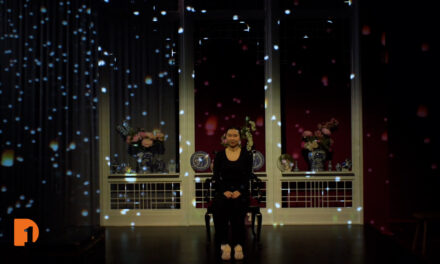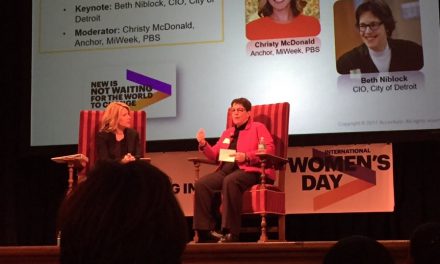As part of Detroit Public Television’s documentary “Detroit Designs the World,” we transport back to Detroit before it became the auto capital of the world to look at the radical design decisions architect Albert Kahn (1869-1942) took when crafting some of Detroit’s most famous buildings.
Whether it was the Highland Park Ford plant in 1910 or the Fisher Building in 1928, Kahn revolutionized the architecture industry with his large, sweeping designs with lots of open space and his use of ornate artistry like sculptures and bronze work. Detroit Experience Factory Founder and Executive Director Jeanette Pierce, Michigan Historic Preservation Officer Brian Conway, Cranbrook Center for Collections and Research Director Gregory Wittkopp, and President and CEO of Albert Kahn Associates, Inc. Alan Cobb discuss the lasting legacy Kahn left in the motor city.
Full Transcript:
Alan Cobb, President & CEO, Albert Kahn Associates, Inc.: In the teens, 20s and 30s, the Germans were devising, this form follows function concept of universal space, exposing the frame of the building and developing that kind of an architectural expression. And really, while they were philosophizing about it, Albert Kahn was quietly building it.
Jeanette Pierce, Founder & Executive Director, Detroit Experience Factory: I give Albert Kahn almost as much credit as Henry Ford for the mass production of the automobile. Because if there wasn’t a building designed like this one with wide-open spaces that could allow for an assembly line to be making cars and buildings before this couldn’t do that. So, this was groundbreaking, not just in the fact that the assembly line was here, but that it was a building that could handle the assembly line and allow for the assembly line to mass-produce the automobile. And so, it was Albert Kahn and Henry Ford together that really put the world on wheels.
Alan Cobb: I think he looked at the client’s needs and the technology of the time and integrated that into a successful solution. How can we build buildings that have a large floor plate, lots of open space, minimize the number of columns?
Brian Conway, Michigan Historic Preservations Officer: Albert Kahn, together with his brothers, developed a system of the concrete construction of the automobile plants with a wide-open floor plates and the concrete columns, leaving the exterior walls to be completely open filled in with glass. Which, 1903, that was very, very radical and it allowed the auto industries to have these very large factories to hold the weight of many, many automobiles. It set the pace for how we look at modern architecture.
Gregory Wittkopp, Director, Cranbrook Center for Collections & Research: People like Le Corbusier, Walter Gropius, they all wanted to see what these new modern factories were like. And then, it very much influenced their own work.
Brian Conway: We see them, then going back to Europe, taking this tenant and developing it into modernism. The idea of clean, open floor plates, the idea of concrete construction or steel construction, the idea of curtain walls, this had already been done here in Michigan.
Jeanette Pierce: The buildings that Kahn designed made a difference in the way that Henry Ford made cars.
Alan Cobb: He also saw architecture in a way of craftsmanship and American craft. And in fact, designed the Fisher Building.
Jeanette Pierce: The Fisher Building is one of the most jaw-dropping buildings in all of Detroit, and honestly in all of the United States.
Alan Cobb: The Fisher Building sort of advanced the American tower. They bring the artist into the process of construction of the building. Many of the works of Kahn include artwork and sculpture, great grill edges and handrails and guardrails, a bronze work, and that certainly was something that Detroit contributed to.
Jeanette Pierce: It literally is the beacon for this new center area. We’re only just about 3 miles from downtown, but this was where General Motors built its empire. Right across the street from the Fisher Building, we have that original General Motors headquarters, and then the Fisher Brothers built this absolute beauty right here in 1928.
Alan Cobb: And many of Khan’s options for the Fisher Building were published at the time. The Empire State Building was built a couple of years after the Fisher Building and very similar stepping form use of stone. You can look at the detailing, you can look at the massing, and we have sketches of several of the options that Albert Kahn devised for the Fisher Building. You know, very similar to what was done with the Empire State Building.
Subscribe to One Detroit’s YouTube Channel & Don’t miss One Detroit Mondays and Thursdays at 7:30 p.m. on Detroit Public TV, WTVS-Channel 56.
Catch the daily conversations on our website, Facebook, Twitter @DPTVOneDetroit, and Instagram @One.Detroit
View Past Episodes >
Watch One Detroit every Monday and Thursday at 7:30 p.m. ET on Detroit Public TV on Detroit Public TV, WTVS-Channel 56.




